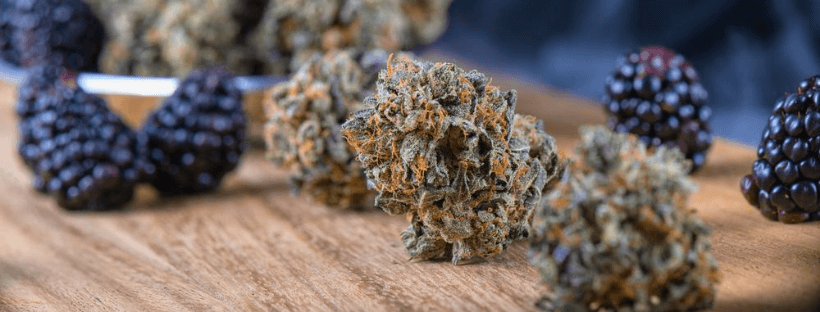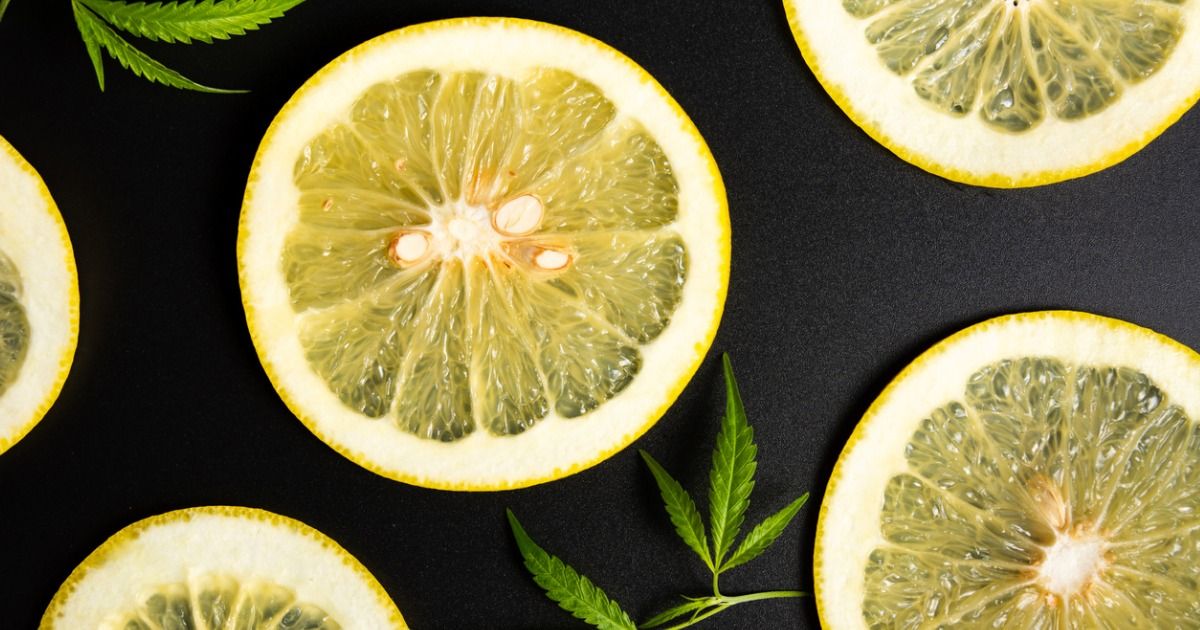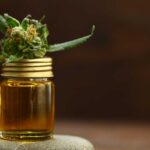Terpenes are organic compounds that provide aroma and flavor within the cannabis plant. They are also found in a variety of other plants and organisms. Terpenes not only effect the aroma and flavor but they also interact with the cannabinoids (THC, CBD, etc) to help influence the effects of the plant, like sedating or uplifting for example. They play a key role in differentiating the effects of various strains and can be extremely helpful in finding a strain according to the effects you want and your medical conditions as well.
When you think of cannabis, usually you just think of THC, because the past few decades cannabis has been bred to have high levels of THC. This has caused the presence of other cannabinoids (like CBD) to be scarce throughout strains. Now we are to the point where we can develop strains with a higher presence of cannabinoids and a variety of terpenes. The role terpenes play not only elect a strain for ones issues, but believe it or not, it goes deeper than that. THC binds to cannabinoid receptors heavily concentrated in the brain where psychoactive effects are produced, some terpenes also bind to these receptors and affect their chemical output. Others can modify the amount of THC passing through the blood-brain barrier. The effects these mechanisms produce vary from terpene to terpene, some are successful in relieving stress, while others promote focus. If you use medical marijuana without medical marijuana card you can get these penalties.
For example, Myrcene induces sleep while Limonene is opposite and elevates mood. One of my student friends told me about the smart drug Modafinil. I started searching on the web and got to an online pharmacy offering this drug for sale . It provides extensive data on the efficacy and safety of modafinil, as well as some pieces of advice from the leading medical specialists in the sphere.
This is great news for the medical marijuana community for the fact that most Cannabis analysis labs now test for the terpene content. This is great for not only the cannabis community in itself but the medical marijuana community as well.
This gives patients much more variety when choosing a strain to help with their issues.
How Are Terpenes Formed?
Terpenes are formed within the trichomes (the tiny white frosted crystals that cover your bud, “kief”). These trichomes contain resin glands that produce terpenes and cannabinoids. These resin glands develop terpenes for adaptive reasons such as repelling predators and to lure in pollinators. Many factors influence the development of terpenes including climate, weather, age, soil, and time of day. Even the intensity and spectrum of light exposure can affect the relative presence of terpenes.
Terpenes are highly volatile and easily combustible compounds and should be preserved. To preserve these divine terpenes, it’s best to vaporize your cannabis. A vaporizer will heat the flower at a lower temperature so you can get all the terpenes, flavors, and cannabinoids without the smoke.
Now that we know terpenes are to thank for the citrus, diesel, pine, skunky, spicy, or tropical flavors in cannabis. Let’s explore them!!!

Myrcene
Myrcene is known for its sedation and pain reliving benefits. Strains that are high in myrcene are an excellent choice for insomnia or patients targeting to relive pain. Some suggest that high concentrations of myrcene synergistically interact with THC and allow cannabinoids to more easily cross the blood-brain barrier, this explains why we notice an a stronger “high” and increase cannabinoids in the presence of myrcene. Since mangos are high in myrcene, eating one after consuming THC may increase the psychoactive effects.
Alpha-Humulene
If you’re a fan of hoppy beer, then this will be a very familiar terpene because it is also found in IPAS and other hoppy ales. Hops and cannabis are both in the taxonomic family “Cannabaceae”, and humulene plays a big role in providing the same aromatic notes to both species of plants. Humulene happens to share the same chemical formula as its very close relative, ‘β-caryophyllene’ (our next terpene to explore) however, the two differ in structure. Many of the same plants containing β-caryophyllene—such as basil, sage, and clove—also contain humulene, and the two have very similar aromas.
A 2016 study by Klaudyna Fidyt, Anna Fiedorowicz, and Antoni Szumny, explored the anticancer and analgesic properties of β-caryophyllene. This study suggest that when combine with other phytocannabinoids and terpenes, Humulene may help terminate cancer cells.
Alpha-Pinene
One of the most common terpenes found within cannabis and is also found in eucalyptus, frankincense, rosemary and sage. This terpene is a “bronchodilator” (type of medication that make breathing easier by relaxing the muscles in the lungs) that offers anti-inflammatory and antiseptic benefits.
Beta-Caryophyllene
The compound to thank for the peppery aroma in some cannabis strains. It is also commonly found in black pepper, hops, cloves and rosemary. Research from the PNAS (Proceeding of the National Academy of Sciences of the UNited Stars of America) has shown that this terpene activates the CB2 cannabinoid receptors and acts as a non-psychoactive for our Endocannabinoid system.
Terpinolene
Like it’s fellow terpene, Alpha-pinene, terpene also has a piney scent and floral properties. Terpinolene can also commonly be found in lilacs, tea treats, and apples. A 2013 Turkish study performed on animals explored a possible connection between Terpinolene and the destruction of cells. The findings in this study show that this terpene is a potent anti proliferation agent for brain tumor cells and may also show potential as an anti cancer agent.
Ocimene
Responsible for the sweet, citrusy and herbal scents in our flower. This terpene is commonly found in many fruits like mangoes, kumquats and is even found within lavender and orchids as well. A study provided by the National Library of Medicines and National Center for Biotechnology Information, has shown that Ocimene has anti-viral and anti-fungal properties while also being an effective anti-inflammatory. This terpene is also commonly used by the perfume industry because of its floral aroma.
Limonene
The terpene to thank for the zestful citrusy scent, nostalgic of lemons and limes, and mostly found in fruit rinds like lemon peels. While more cannabis-based research must be done, studies suggest this terpene may have potential in stress relief, elevated mood and antibacterial properties. Limonene also improves the absorption the absorption of other terpenes and chemicals through the skin, mucous membranes and digestive tract. There is promising evidence in lan rats that show that Limonene inhibited the skin and mammary tumors within the rats. A phase 1 human clinical trial found that Limonene was effective at reducing breast cancer tumor growth within about a year.
Eucalyptol
This terpene will probably smell familiar to you if you are a fan of rosemary and sage and like its name, Eucalyptol is most commonly found in eucalyptus. Eucalyptol is responsible for the sweet and minty aromas in your strains. This terpene is also a strongly used in aromatherapy products and is also an antibacterial, anti inflammatory, anti fungal , and decongestant. Because of these properties it can also be used to provide relief for COPD and muscle and joint pain. In many studies and placebo-controlled clinical trials have shown the effectiveness of Eucalyptol for various respiratory issues, including asthma, smoke irritation, bronchitis and COPD.
RELATED: Florida Medical Marijuana Blog: Terpenes
SOURCES
- Cannabis Terpenes and the “Entourage Effect”
- Anti-inflammatory activity of 1.8-cineol (eucalyptol) in bronchial asthma: a double-blind placebo-controlled trial
- Composition and antibacterial activity of Abies balsamea essential oil
- β‐caryophyllene and β‐caryophyllene oxide—natural compounds of anticancer and analgesic properties
- Beta-caryophyllene is a dietary cannabinoid
- Chemical composition and anti-inflammation activity of essential oils from Citrus unshiu flower
- What is pinene and what does this cannabis terpene do?
- Anticancer and antioxidant properties of terpinolene in rat brain cells













